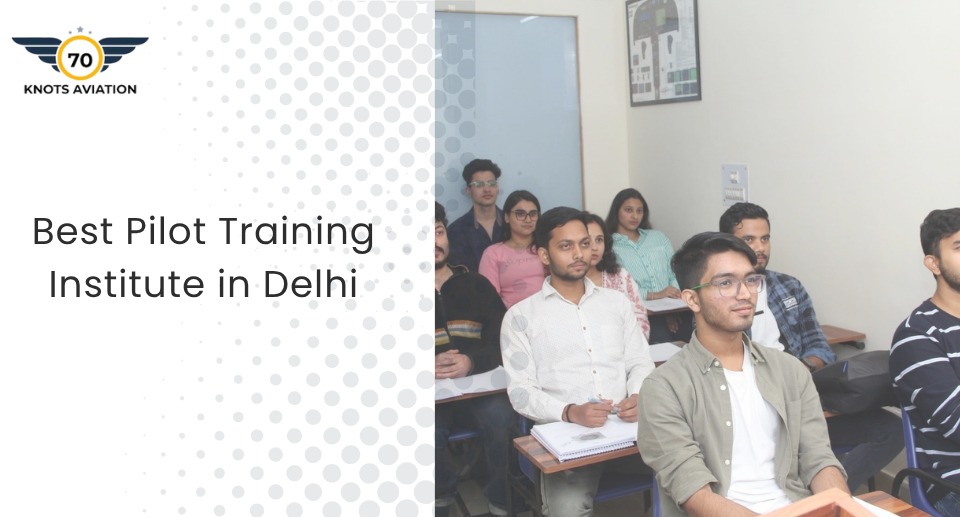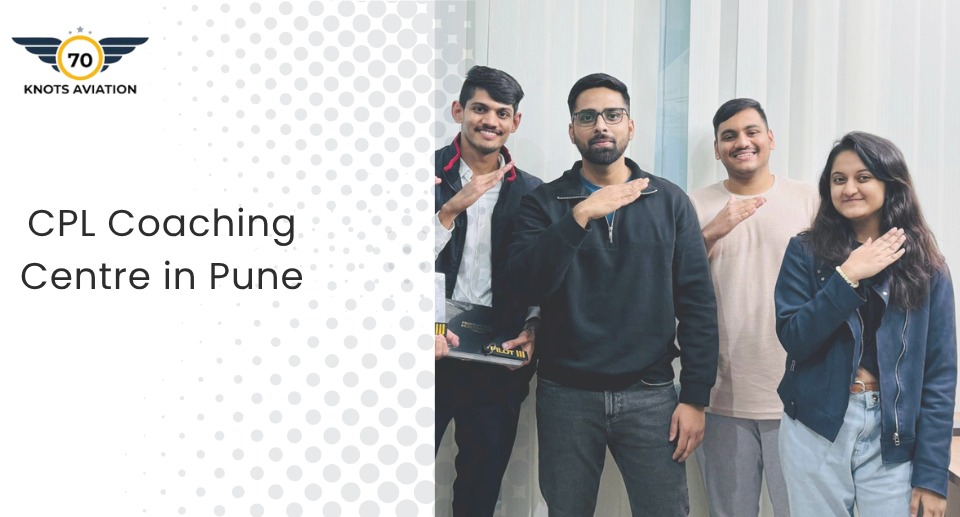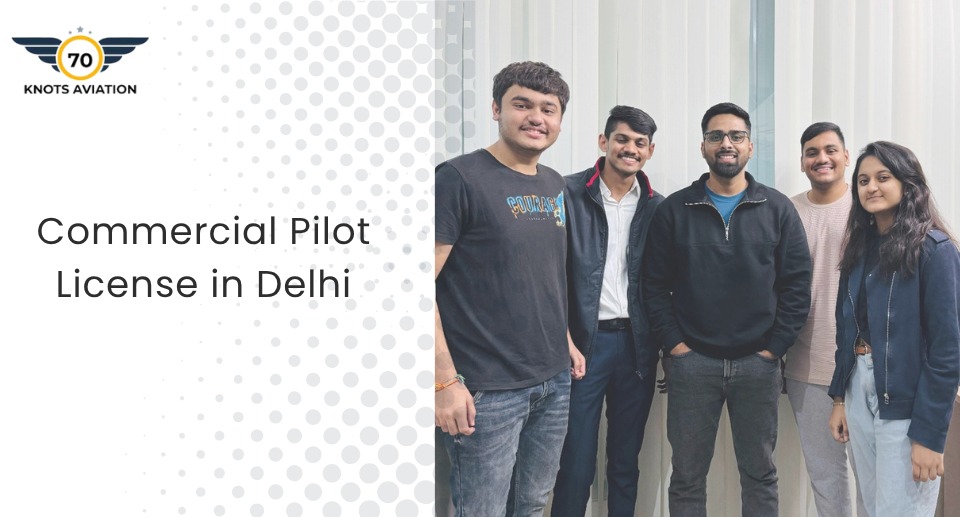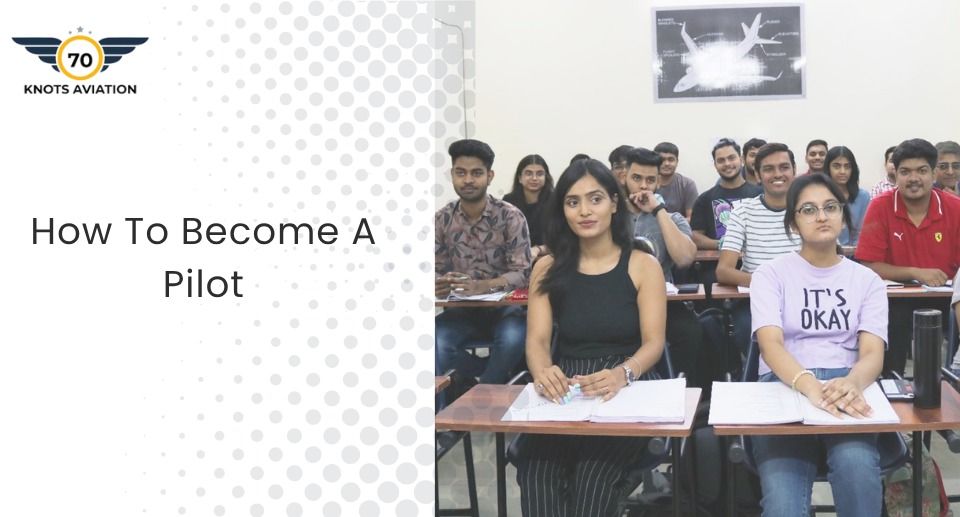Your Gateway to the Skies: Why 70 Knots Aviation Is the Best Pilot Training Institute in Delhi

Choosing to become a pilot isn’t just about loving planes. It also means finding the best pilot training institute in Delhi that gives you the right mix of books, real‑world flying time, and people who actually care. 70 Knots Aviation tries to give you all of that, so many students say it’s the best spot for pilot training in the capital. The institute follows every DG‑CA rule, lets you learn from folks who fly for airlines, and has a history of high scores on the exams. All of this makes it a solid route for anyone hoping to sit behind a cockpit.
A Quick Look at the School
The academy opened in 2015 and quickly made a name for itself among Delhi’s many flight schools. It’s located near a main road, easy to reach by bus or metro, and the whole idea behind the place is to teach the “Commercial Pilot Licence” (CPL) and “Air Transport Pilot Licence” (ATPL) exactly the way the regulator wants. Since day one, students have been passing DG‑CA tests on the first try more often than not. That isn’t just luck—the school builds a schedule that keeps the learner front and center. Each class is meant to be small enough that the instructor can actually answer questions, something big institutions sometimes skip.
What You’ll Study
The course list looks long, but each part has a simple purpose.
- Air Navigation—teaches you how to read charts, plot routes, and fly both in clear skies (VFR) and cloudy ones (IFR).
- Aviation Meteorology—shows you how weather works and how to spot storms before they become dangerous.
- Air Regulation—goes over the DG‑CA rules, the paperwork, and the safety standards you’ll need to follow.
- Technical General – basics of how an aircraft’s engine, fuel system, and controls operate.
- Radio Telephony (Aeronautical)—how to speak clearly with air‑traffic control so nobody gets confused.
- Airline Preparation—tips on crew teamwork, airline habits, and professional behavior.
- ATPL Written & Oral – practice for the tough written and speaking exams that give the final license.
- Type Rating – learning the details of a particular plane model, like an Airbus A320 or a Boeing 737.
- English Language Proficiency – a short course to meet ICAO language standards.
- Simulator Training – using a realistic cockpit mock‑up to practice emergencies without actual risk.
- Medical Guidance—help with getting the mandatory Class I or II medical certificate.
All of those parts fit together like the pieces of a puzzle. Skipping any one would leave a gap in what airlines expect from a new pilot.
How to Get Into the Program
You need to finish 12th grade with physics and math, be at least 18, speak English well enough, and pass a medical test. The school knows not everyone has those exact grades, so they also partner with the National Institute of Open Schooling (NIOS). That way you can finish the needed subjects before the real training starts.
Ground School Then Flight Time
First comes ground school. The teachers give you a set of notes, practice questions, and weekly doubt‑clearing sessions. They keep the material short and to the point, so it’s easier to remember. After you feel comfortable on paper, you move to flight training—usually 200‑250 hours in the air. The school works with Indian and worldwide flight‑training organizations, so you get to practice in busy airspace, bad weather, and on different aircraft types. While you’re flying, you’ll have stage checks, a mentor watching your progress, and a log that you can view online through the EGCA portal. Everything is recorded, so you always know where you stand.
What Sets 70 Knots Apart?
- Free study packs – No need to buy extra books; the school hands out all notes and mock exams.
- Mentors who actually fly—You talk to pilots who work for airlines, get real interview tips, and learn what a day on the job looks like.
- Online and offline classes—If you have a job or side hustle, you can study from home or come to the campus.
- Medical help on site—They link you with a doctor who knows the DG‑CA forms, so you don’t waste time chasing certificates.
- Price that makes sense—The fee list is clear, there are scholarships and payment plans, and there is none of that hidden junk.
- Feedback after each test—You get a simple report showing what you got right and where you need work.
- Focus on understanding, not memorizing—teachers try to explain why we do things a certain way, not just what the rule says.
- Lots of practice questions and one‑on‑one help—even the hardest topics become manageable.
Because of those points, many students say the school really prepares them for the real world.
Student Stories
“The ground class felt like a puzzle that finally made sense. The teachers kept it fun, so I actually looked forward to studying.” – Rahul, 2022 graduate
“I cleared all my DG‑CA papers in six months. The notes were spot‑on, and the mock exams simulated the real test perfectly.” – Priya, 2023 graduate
These short quotes reflect a pattern: students tend to pass on their first attempt and land jobs with big carriers shortly after.
Teachers and Updates
The instructor list reads like a mix of airline captains, former military pilots, and specialists in navigation or weather. They meet each year to refresh the syllabus, adding new things like glass‑cockpit panels or recent regulatory changes. The school also works with flying clubs in other countries, giving students a glimpse of how pilots operate abroad.
How to Apply
- Grab the brochure from the website—it shows courses, money matters, and the timeline.
- Book a free chat with an admissions counselor—they’ll check if you fit the basic rules.
- Upload your documents (10+2 marks, ID, medical report) through the portal.
- Pick a batch—ground school runs for about five months, then you move to flight time when a plane is free.
- Pay the fees—you can split the amount; there are clear rules on refunds if you need to pause.
If you missed the physics‑math requirement, the NIOS bridge class is there to help you catch up without delaying your pilot dream.
Why It Matters
India’s airlines are growing fast. More planes mean the need for more pilots, especially for commercial, charter, and cargo flights. If you want a job as soon as possible, the quality of your training matters a lot. A school that follows the regulator, gives hands‑on practice, and connects you with real pilots makes you more marketable.
Conclusion
70 Knots Aviation tries to mix expert teaching, a full‑range curriculum, actual flying time, and solid support for each student. Its strong DG‑CA pass record, mentors who work in the industry, flexible learning options, and honest pricing make it a strong contender for anyone in Delhi looking to become a best pilot training institute in Delhi . If you want a program that actually prepares you for airline life, give 70 Knots a look, fill out the online form, and see if this could be the first step toward your cockpit seat.



